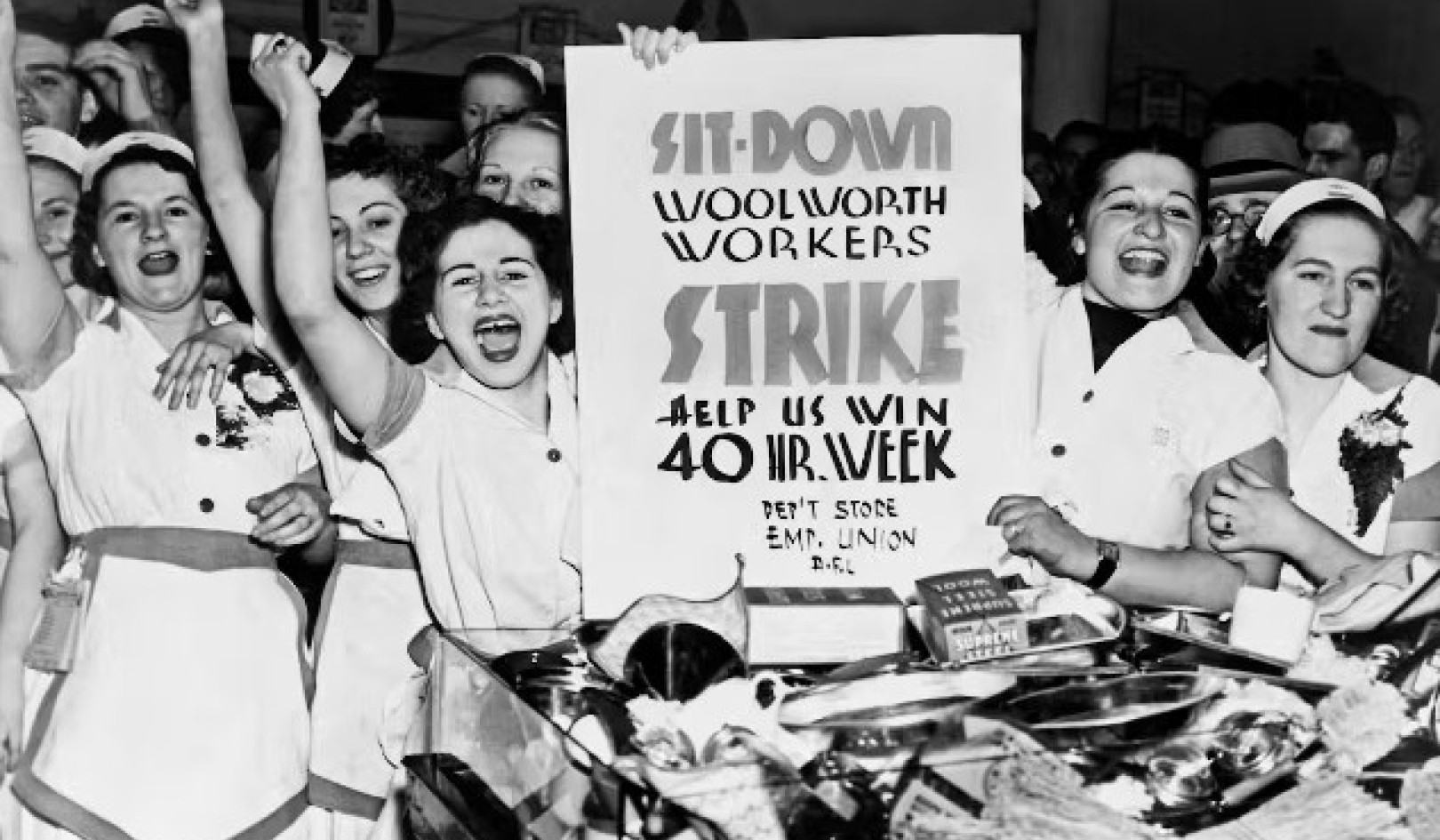
Hundreds protested peacefully in Immokalee, Fla., against a state law enacted in 2023 that imposes restrictions on undocumented immigrants. AP Photo/Rebecca Blackwell
Although Congress is failing to pass laws to restrict the number of migrants arriving in the U.S., a majority of Americans – about 6 in 10 – believe there’s an immigration crisis along the Mexico-U.S. border. Politicians who want fewer people to move here often cast those arriving without prior authorization as a burden on the economy.
As an economist who has researched immigration and employment, I’m confident that economic trends and research findings contradict those arguments.
The U.S. is experiencing a labor market shortage that is likely to last well into the future as the U.S.-born population gets older overall, slowing growth in the number of workers.
Rather than a drain on the economy, an uptick in immigration presents an opportunity to alleviate this shortage. Data from my own research and studies conducted by other scholars shows that immigrant workers in the U.S. are more likely to be active in the labor market – either employed or looking for work – and tend to work in professions with the most unmet demand.
Help really wanted
The U.S. had 9 million job openings in December 2023, according to the Bureau of Labor Statistics. The government agency also found that there were 6.1 million unemployed people actively seeking paid work.
Economists generally compare the two numbers to calculate the labor shortage. It currently stands at nearly 3 million workers, and the bureau expects this gap to grow as the population ages and people have fewer children over the next decade.
In other words, the U.S. faces a long-term shortage of people looking for employment.
That shortfall would be much bigger without foreign-born workers, who accounted for a record high of 18.1% of the U.S. civilian labor force in 2022, according to the Bureau of Labor Statistics.
More likely to be active in the workforce
Another reason why immigrants can help fill that big hole in the U.S. labor market is that so many of them tend to be employed or are looking for work.
About 65.9% of all people who were born elsewhere were either employed or actively looking for work as of 2022, in comparison to 61.5% of people born in the U.S.
This difference has been consistent since 2007, according to research by the Peterson Foundation, a think tank that focuses on long-term budget problems.
In a study I conducted a few years ago, I found that immigrants who arrive in the United States as refugees fleeing violence and persecution in their home countries are eventually more likely to be employed or looking for work than people who are born in the U.S.
More home health aides and janitors
Some of the labor market’s biggest shortages are especially acute in professions that tend to attract immigrants, such as home health aides.
The health care and social services sector as a whole has about 1.8 million open jobs, the largest number of job openings currently available.
This is followed by professional and business services with 1.7 million open jobs. This category encompasses everything from legal services to janitorial work, including cleaning and grounds maintenance.
Currently, about 22% of employed immigrants work in one of those two high-demand categories or another service occupation.
Making it easier to age in place
A team of economists has found that the cost of home health care and support services is lower than average in places with large numbers of immigrant service workers. This in turn makes it more likely that older adults can avoid institutionalization and stay in their own homes.
But, to be sure, immigrant workers providing these vital community support services often endure exploitative working conditions.
The labor market data not only makes it clear that the U.S. economy can absorb large numbers of immigrants, but it shows that these newcomers could be a much-needed solution to a labor supply crisis.
And yet people arriving in the U.S. as political asylum applicants are enduring backlogs and facing hurdles in securing employment authorization, which is delaying their entry into the workforce.
Wouldn’t it make more sense for Congress to expand pathways for legal employment access for migrants? From an economic perspective, that seems to be the most prudent course of action.![]()
Ramya Vijaya, Professor of Economics, Stockton University
This article is republished from The Conversation under a Creative Commons license. Read the original article.
Recommended books:
Capital in the Twenty-First Century
by Thomas Piketty. (Translated by Arthur Goldhammer)
 In Capital in the Twenty-First Century, Thomas Piketty analyzes a unique collection of data from twenty countries, ranging as far back as the eighteenth century, to uncover key economic and social patterns. But economic trends are not acts of God. Political action has curbed dangerous inequalities in the past, says Thomas Piketty, and may do so again. A work of extraordinary ambition, originality, and rigor, Capital in the Twenty-First Century reorients our understanding of economic history and confronts us with sobering lessons for today. His findings will transform debate and set the agenda for the next generation of thought about wealth and inequality.
In Capital in the Twenty-First Century, Thomas Piketty analyzes a unique collection of data from twenty countries, ranging as far back as the eighteenth century, to uncover key economic and social patterns. But economic trends are not acts of God. Political action has curbed dangerous inequalities in the past, says Thomas Piketty, and may do so again. A work of extraordinary ambition, originality, and rigor, Capital in the Twenty-First Century reorients our understanding of economic history and confronts us with sobering lessons for today. His findings will transform debate and set the agenda for the next generation of thought about wealth and inequality.
Click here for more info and/or to order this book on Amazon.
Nature's Fortune: How Business and Society Thrive by Investing in Nature
by Mark R. Tercek and Jonathan S. Adams.
 What is nature worth? The answer to this question—which traditionally has been framed in environmental terms—is revolutionizing the way we do business. In Nature’s Fortune, Mark Tercek, CEO of The Nature Conservancy and former investment banker, and science writer Jonathan Adams argue that nature is not only the foundation of human well-being, but also the smartest commercial investment any business or government can make. The forests, floodplains, and oyster reefs often seen simply as raw materials or as obstacles to be cleared in the name of progress are, in fact as important to our future prosperity as technology or law or business innovation. Nature’s Fortune offers an essential guide to the world’s economic—and environmental—well-being.
What is nature worth? The answer to this question—which traditionally has been framed in environmental terms—is revolutionizing the way we do business. In Nature’s Fortune, Mark Tercek, CEO of The Nature Conservancy and former investment banker, and science writer Jonathan Adams argue that nature is not only the foundation of human well-being, but also the smartest commercial investment any business or government can make. The forests, floodplains, and oyster reefs often seen simply as raw materials or as obstacles to be cleared in the name of progress are, in fact as important to our future prosperity as technology or law or business innovation. Nature’s Fortune offers an essential guide to the world’s economic—and environmental—well-being.
Click here for more info and/or to order this book on Amazon.
Beyond Outrage: What has gone wrong with our economy and our democracy, and how to fix it -- by Robert B. Reich
 In this timely book, Robert B. Reich argues that nothing good happens in Washington unless citizens are energized and organized to make sure Washington acts in the public good. The first step is to see the big picture. Beyond Outrage connects the dots, showing why the increasing share of income and wealth going to the top has hobbled jobs and growth for everyone else, undermining our democracy; caused Americans to become increasingly cynical about public life; and turned many Americans against one another. He also explains why the proposals of the “regressive right” are dead wrong and provides a clear roadmap of what must be done instead. Here’s a plan for action for everyone who cares about the future of America.
In this timely book, Robert B. Reich argues that nothing good happens in Washington unless citizens are energized and organized to make sure Washington acts in the public good. The first step is to see the big picture. Beyond Outrage connects the dots, showing why the increasing share of income and wealth going to the top has hobbled jobs and growth for everyone else, undermining our democracy; caused Americans to become increasingly cynical about public life; and turned many Americans against one another. He also explains why the proposals of the “regressive right” are dead wrong and provides a clear roadmap of what must be done instead. Here’s a plan for action for everyone who cares about the future of America.
Click here for more info or to order this book on Amazon.
This Changes Everything: Occupy Wall Street and the 99% Movement
by Sarah van Gelder and staff of YES! Magazine.
 This Changes Everything shows how the Occupy movement is shifting the way people view themselves and the world, the kind of society they believe is possible, and their own involvement in creating a society that works for the 99% rather than just the 1%. Attempts to pigeonhole this decentralized, fast-evolving movement have led to confusion and misperception. In this volume, the editors of YES! Magazine bring together voices from inside and outside the protests to convey the issues, possibilities, and personalities associated with the Occupy Wall Street movement. This book features contributions from Naomi Klein, David Korten, Rebecca Solnit, Ralph Nader, and others, as well as Occupy activists who were there from the beginning.
This Changes Everything shows how the Occupy movement is shifting the way people view themselves and the world, the kind of society they believe is possible, and their own involvement in creating a society that works for the 99% rather than just the 1%. Attempts to pigeonhole this decentralized, fast-evolving movement have led to confusion and misperception. In this volume, the editors of YES! Magazine bring together voices from inside and outside the protests to convey the issues, possibilities, and personalities associated with the Occupy Wall Street movement. This book features contributions from Naomi Klein, David Korten, Rebecca Solnit, Ralph Nader, and others, as well as Occupy activists who were there from the beginning.
Click here for more info and/or to order this book on Amazon.

























